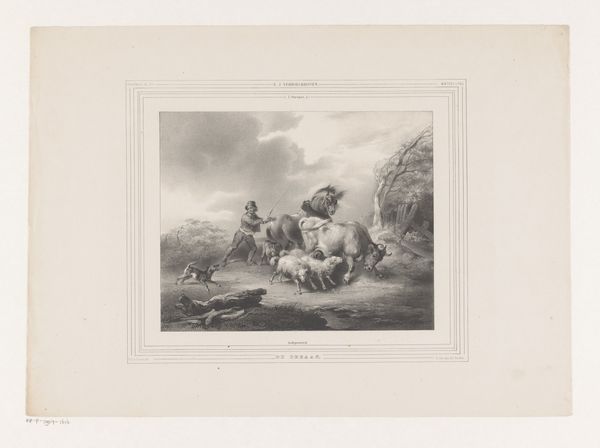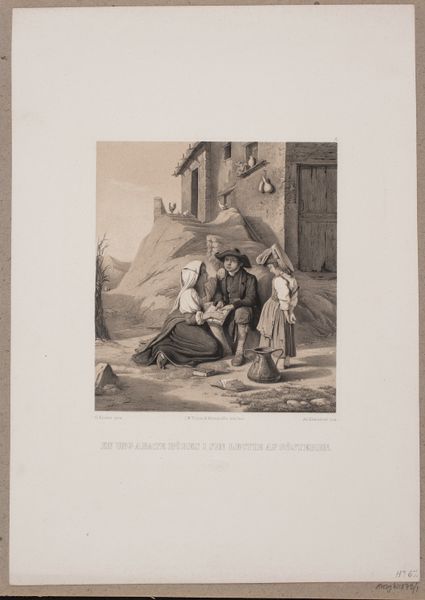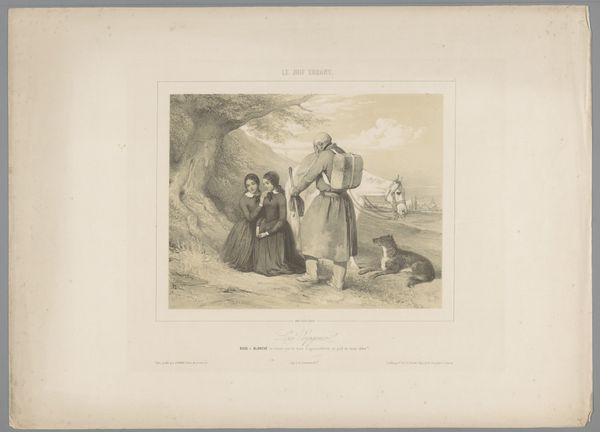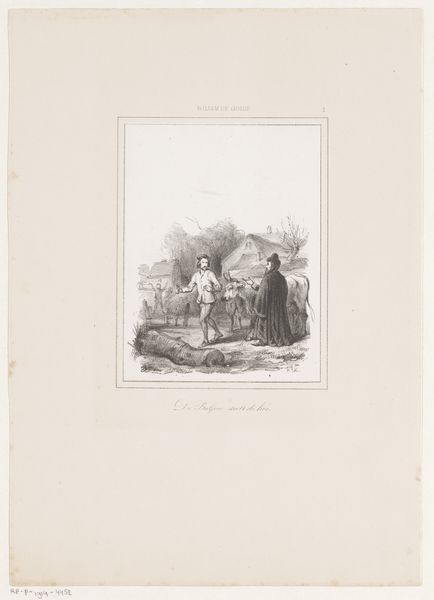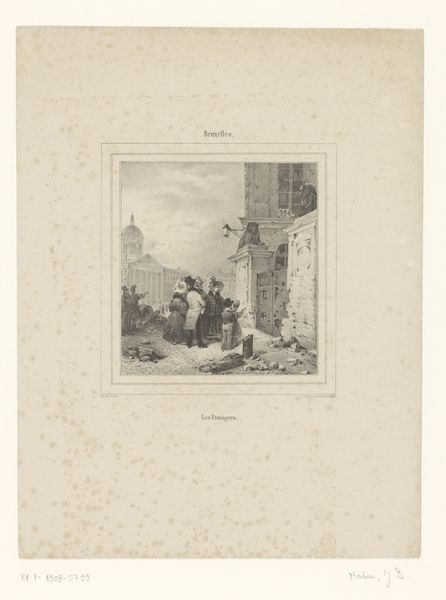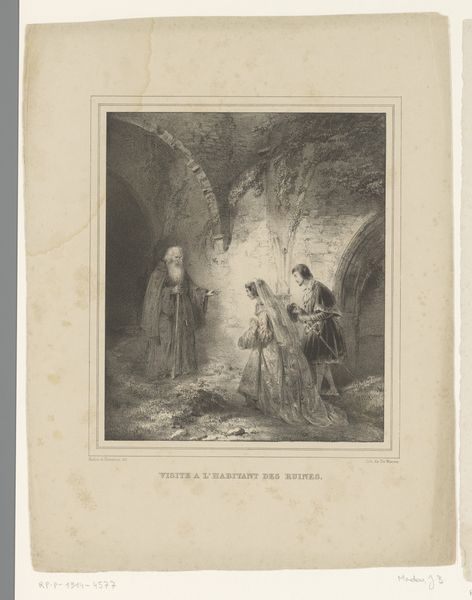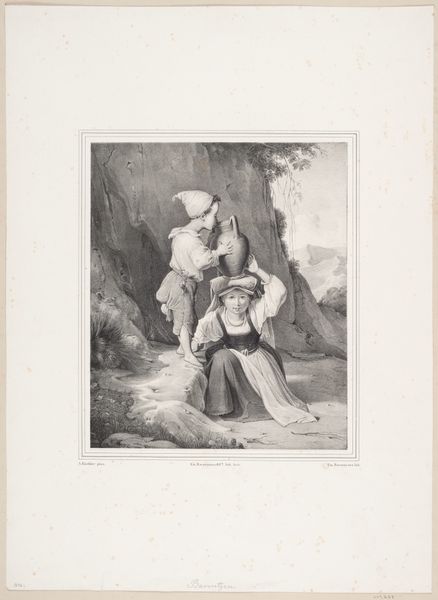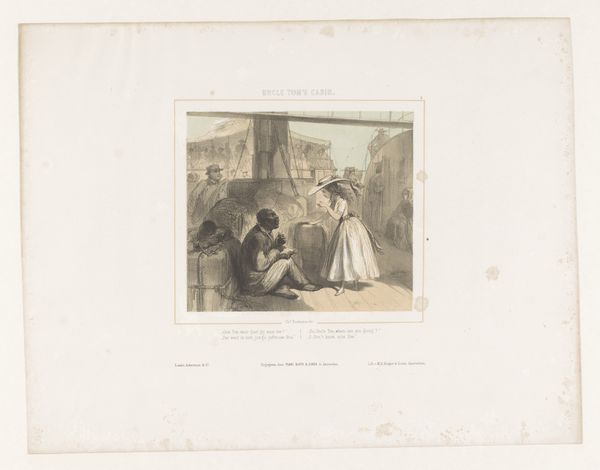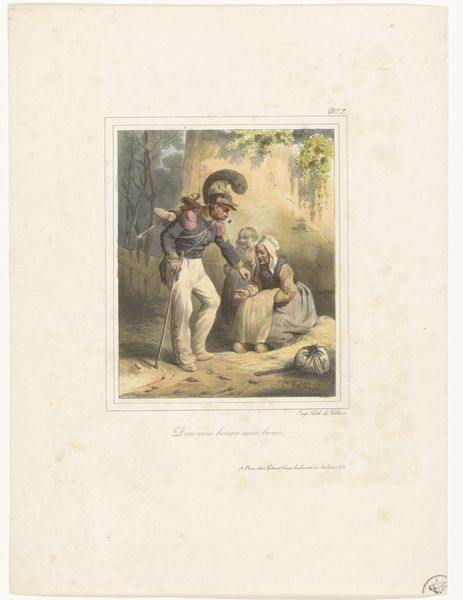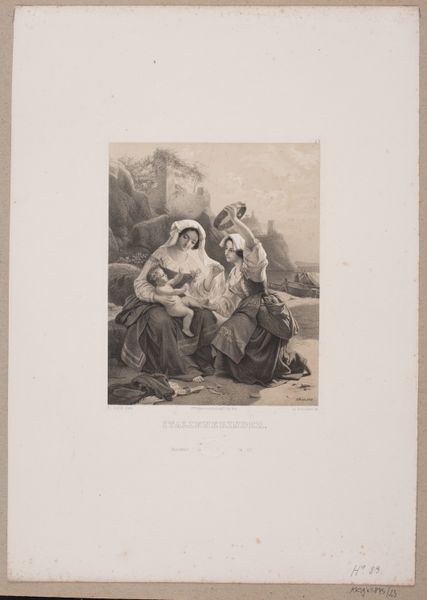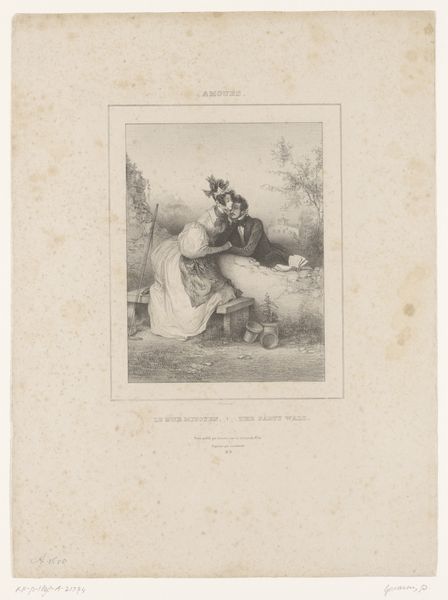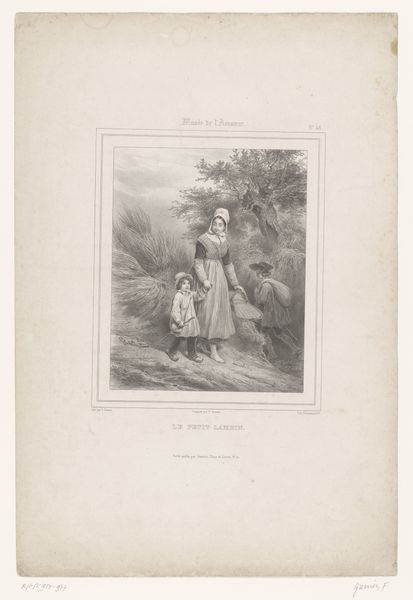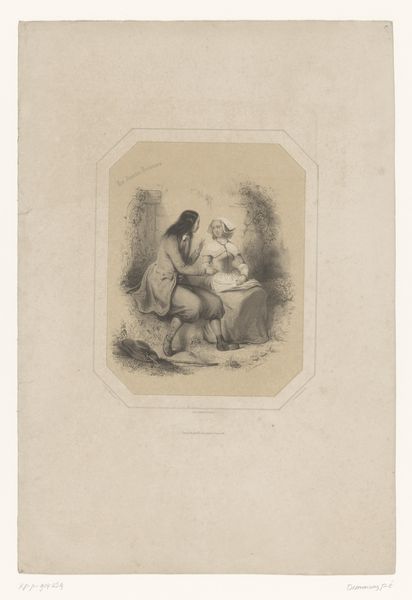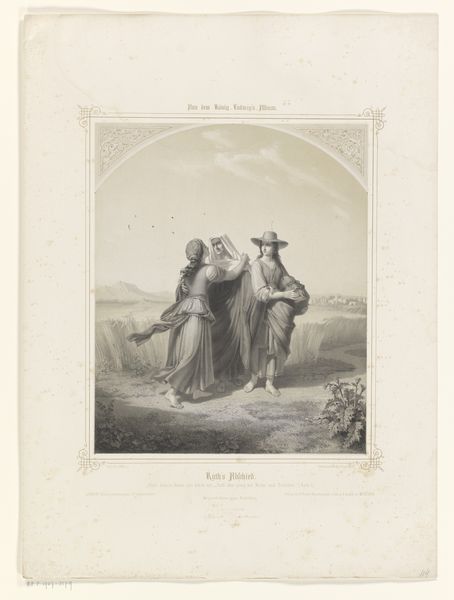
lithograph, print
#
portrait
#
lithograph
# print
#
landscape
#
romanticism
#
19th century
#
genre-painting
Dimensions: height 334 mm, width 260 mm
Copyright: Rijks Museum: Open Domain
Curator: This lithograph by Émilien Desmaisons, entitled "Familie van zeeman wacht aan het strand," or "Family of a Sailor Waiting on the Beach," was created between 1838 and 1842 and now resides in the Rijksmuseum. It immediately strikes me as melancholic. Editor: Yes, that muted palette of grays lends itself to a somber tone. The textures in the lithographic printmaking, specifically the varying pressures that render the figures, create a dramatic range, emphasizing the roughness of the coastal landscape versus the relative softness of the figures. Curator: Absolutely. Notice how Desmaisons orchestrates a composition in a subtle spectrum of greys, yet he captures various emotive qualities. Consider the women and the child positioned lower, perhaps symbolizing their perceived helplessness. The lone man shielding his eyes... is it hope or resignation we see in that gesture? Editor: And the way he’s rendered in a darker tone as well… almost camouflaged in the cliffs above the rest of his family. Lithography allowed for relatively inexpensive reproduction and distribution, enabling such images of the maritime working class and their families to circulate broadly and speak to real social and economic conditions of labor. This print seems rooted in that. Curator: I agree; the positioning emphasizes their connection to and disconnection from, the sea. The linear forms defining the coast sharply contrast with the curvilinear rendering of the family, further highlighting this dynamic of connection. Editor: There's a deliberate crafting of sentiment here that romanticizes maritime struggle while quietly reminding us of the material circumstances faced by many families tied to seafaring livelihoods. Look closely—you'll find signs of the artist's hand throughout, evidence of his process almost like marks of solidarity with these families depicted. Curator: Yes, you’re absolutely right! Desmaisons allows the viewer access through his intentional mark-making to empathize with this narrative tableau and perhaps even universalize it across multiple contexts beyond this small coastal village. Editor: Considering our exchange, this piece reflects on labor practices in Romantic-era seascapes while using specific aesthetic languages that are relevant to the historical context it speaks to. Curator: Agreed, the lithograph offers a profound exploration into family bonds, set against the unpredictable forces that marked maritime life in 19th-century Europe, where the formal structure perfectly resonates with that context.
Comments
No comments
Be the first to comment and join the conversation on the ultimate creative platform.
